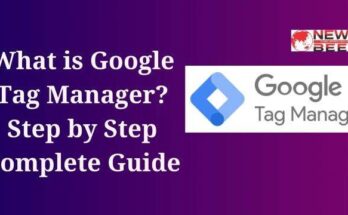Keywords play a crucial role in search engine optimization (SEO), serving as the foundation for online visibility and search engine rankings. In the realm of SEO, keywords are the specific words or phrases that users input into search engines when looking for information, products, or services. Effectively understanding and implementing various types of keywords is essential for optimizing web content and improving organic search performance. In this comprehensive exploration, we will delve into the different types of keywords in SEO, examining their significance and offering insights into how to leverage them for maximum impact.
Table of Contents
ToggleTypes of Keywords in SEO:
1. Primary Keywords:
Primary keywords, also known as “head” or “main” keywords, are the most important terms directly related to the core theme of a webpage. They represent the primary focus of the content and are typically broad and competitive. For example, if a website is about digital marketing, the primary keyword might be “digital marketing.”
Optimizing for primary keywords is critical as they define the overall theme of the page and help search engines understand its relevance to user queries. However, due to their competitiveness, ranking for primary keywords can be challenging. It’s essential to create high-quality, authoritative content to increase the likelihood of ranking well for these terms.
2. Long-Tail Keywords:
Long-tail keywords are longer, more specific phrases that cater to a niche audience. Unlike primary keywords, long-tail keywords are less competitive, making it easier to rank for them. For instance, instead of targeting “digital marketing,” a long-tail keyword could be “effective digital marketing strategies for small businesses.”
Long-tail keywords are valuable for attracting highly targeted traffic and capturing users with specific intent. They often result in better conversion rates since users searching for long-tail terms typically have a clearer idea of what they’re looking for.
3. Short-Tail Keywords:
Short-tail keywords, also known as “head” keywords, are concise and usually one or two words in length. They are broad and capture a wide range of topics. Short-tail keywords are highly competitive, and ranking for them requires significant effort and resources. Examples include “SEO,” “marketing,” or “technology.”
Also, Read This: What is Digital Marketing in Hindi
While short-tail keywords can drive substantial traffic, they often lack specificity. Incorporating a mix of short-tail and long-tail keywords in your SEO strategy helps balance the need for broad visibility and targeted traffic.
4. LSI Keywords:
Latent Semantic Indexing (LSI) keywords are words and phrases that are semantically related to the main topic of a webpage. Search engines use LSI keywords to understand the context of content, improving the accuracy of search results. For instance, if the main topic is “apple,” LSI keywords could include “fruit,” “orchard,” or “healthy snacks.”
Integrating LSI keywords into content naturally helps search engines recognize the relevance and depth of the information provided. This can positively impact search rankings and enhance the overall user experience.
5. Branded Keywords:
Branded keywords include the name of a specific brand, company, product, or service. Examples of branded keywords are “Nike shoes” or “Apple iPhone.” Optimizing for branded keywords is crucial for building brand visibility and attracting users already familiar with or interested in a particular brand.
Branded keywords are typically less competitive, and ranking for them is essential for maintaining a strong online presence. Additionally, they contribute to a website’s overall authority and trustworthiness in the eyes of search engines.
6. Competitor Keywords:
Analyzing and incorporating competitor keywords into your SEO strategy can provide valuable insights. These are the keywords for which your competitors are ranking well. Understanding competitor keywords helps identify gaps in your own strategy, discover new opportunities, and refine your content to better compete in the same space.
Tools like keyword research platforms and competitor analysis tools can aid in identifying competitor keywords and evaluating their performance.
7. Intent-Based Keywords:
Understanding user intent is crucial for effective keyword targeting. Intent-based keywords focus on the reason behind a user’s search. There are three main types of user intent: informational, navigational, and transactional.
- Informational Intent: Users seek information. Example: “How does SEO work?”
- Navigational Intent: Users are looking for a specific website or page. Example: “Facebook login page.”
- Transactional Intent: Users intend to make a purchase or take a specific action. Example: “Buy Nike running shoes.”
Aligning your keywords with user intent ensures that your content meets the needs of your audience, leading to higher user satisfaction and improved search rankings.
8. Product-Defining Keywords:
For e-commerce websites, product-defining keywords are essential. These keywords describe the specific products or services offered. For example, a shoe retailer might target keywords like “running shoes,” “athletic footwear,” or “casual sneakers.”
Optimizing for product-defining keywords helps attract users interested in making a purchase, making it crucial for online retailers to include these terms in product descriptions, meta tags, and other on-page elements.
9. Seasonal Keywords:
Seasonal keywords are tied to specific times of the year or events. Examples include “summer fashion trends,” “holiday gift ideas,” or “back-to-school supplies.” Integrating seasonal keywords into your content strategy allows you to capitalize on timely trends and cater to users’ current interests.
Updating your content regularly to include relevant seasonal keywords demonstrates to search engines that your website is current and provides valuable, up-to-date information.
10. Geo-Targeted Keywords:
Geo-targeted keywords are location-specific, catering to users in a particular geographic area. For businesses with a local presence, optimizing for geo-targeted keywords is crucial. Examples include “restaurants in New York City,” “plumbers in Los Angeles,” or “best parks in Chicago.”
Including location-specific information in your content, meta tags, and business listings helps improve local search rankings and ensures that your business appears in relevant local searches.
11. Evergreen Keywords:
Evergreen keywords are timeless and relevant regardless of the season or current trends. They represent topics that remain consistently popular over time. Examples include “how to tie a tie,” “healthy recipes,” or “time management tips.”
Incorporating evergreen keywords into your content strategy provides long-term value, attracting a steady stream of traffic and maintaining relevance over extended periods.
12. Semantic Keywords:
Semantic keywords are words that have a similar meaning to the target keyword. Search engines use semantic analysis to understand the context and relevance of content. Including semantic keywords in your content enhances its comprehensiveness and helps search engines grasp the broader meaning.
For example, if the target keyword is “smartphones,” semantic keywords could include “mobile devices,” “cell phones,” or “handheld gadgets.”
13. Industry-Specific Keywords:
Certain industries have specialized terminology and keywords that are crucial for reaching their target audience. These industry-specific keywords might not be commonly used outside the niche but are highly relevant within it. Understanding and incorporating these keywords is essential for effective communication with the target audience.
For instance, in the field of web development, industry-specific keywords could include “responsive design,” “UX/UI,” or “backend development.”
14. Negative Keywords:
Negative keywords are terms for which you do not want your content to appear in search results. They help filter out irrelevant traffic and improve the overall quality of your audience. For example, if your website sells luxury watches, you might use “cheap” as a negative keyword to prevent your ads from showing up in searches for inexpensive watches.
Implementing negative keywords is particularly important in paid advertising campaigns to avoid wasting budget on clicks that are unlikely to convert.
15. Trending Keywords:
Monitoring and incorporating trending keywords into your content can give it a temporary boost in visibility. These keywords are associated with current events, viral topics, or popular trends. Staying informed about industry trends and integrating trending keywords into your strategy can help capitalize on current interests and attract a broader audience.
However, it’s essential to balance trending keywords with evergreen content to maintain consistent traffic over time.
Conclusion:
In the dynamic landscape of SEO, understanding and effectively utilizing various types of keywords is fundamental to success. A strategic approach that encompasses primary keywords, long-tail variations, branded terms, and intent-based phrases provides a well-rounded foundation for optimizing web content.
By recognizing the importance of user intent, industry-specific terminology, and the evolving nature of search behavior, businesses and website owners can stay ahead in the competitive online environment. Regularly updating and refining keyword strategies based on analytics, user feedback, and industry trends ensures that web content remains relevant, engaging, and visible to the target audience.
Also, Read This: Google Search Console Interview Questions And Answers
In summary, the world of SEO is multifaceted, and a comprehensive keyword strategy that embraces the diversity of keyword types is key to achieving sustainable online success. From primary keywords that define the overarching theme to long-tail variations that capture specific user queries, each type plays a unique role in shaping the digital landscape. As technology and user behavior continue to evolve, staying attuned to emerging trends and adapting keyword strategies accordingly will be crucial for maintaining a competitive edge in the ever-changing realm of search engine optimization.
Frequently Asked Questions (FAQs)
1. What are the different types of keywords in SEO?
- Short-Tail Keywords: Typically one to three words, e.g., “shoes.”
- Long-Tail Keywords: More specific phrases, e.g., “running shoes for women.”
- LSI Keywords (Latent Semantic Indexing): Words related to the main keyword, e.g., “jogging shoes” for a “running shoes” query.
- Brand Keywords: Specific to a brand, e.g., “Nike shoes.”
2. How do I choose the right keywords for my website?
- Relevance: Ensure keywords align with your content and audience.
- Search Volume: Look for keywords with a balance of search volume and competition.
- Intent: Consider user intent – informational, navigational, or transactional.
3. What is the importance of long-tail keywords?
- Long-tail keywords are more specific and often have lower competition.
- They cater to niche audiences and can result in higher conversion rates.
4. How can I find relevant keywords for my niche?
- Use keyword research tools like Google Keyword Planner, SEMrush, or Ahrefs.
- Analyze competitors’ keywords.
- Leverage customer feedback and FAQs for insights.
5. Are there seasonal keywords?
- Yes, some keywords are more popular during specific seasons or events.
- E.g., “beach vacations” may be more searched in the summer.
6. What are the benefits of using LSI keywords?
- Enhance content relevance and context for search engines.
- Improve the overall user experience by providing comprehensive information.
7. How can I optimize for local keywords?
- Include location-specific terms in your content.
- Claim and optimize your Google My Business listing.
- Encourage customer reviews mentioning location.
8. Can I use synonyms of my target keywords?
- Yes, using synonyms and variations helps to reach a broader audience.
- Google’s algorithms are becoming more sophisticated in understanding context.
9. How often should I update my keywords?
- Regularly review and update keywords based on industry trends and changes in user behavior.
- Monitor your website analytics and adjust as needed.
10. What is keyword cannibalization, and how can I avoid it?
- Keyword cannibalization occurs when multiple pages on a website target the same keyword.
- To avoid it, conduct a site audit, consolidate similar content, and optimize for distinct keywords.





Woah! I’m enjoying the template/theme of this website. It’s simple, yet effective. A lot of times it’s very hard to get that “perfect balance” between superb usability and visual appeal. I must say you’ve done a very good job with this.
My brother suggested that I check out this website, and he was 100% correct. This post brightened my day, and you have no idea how much time I spent searching for this information.